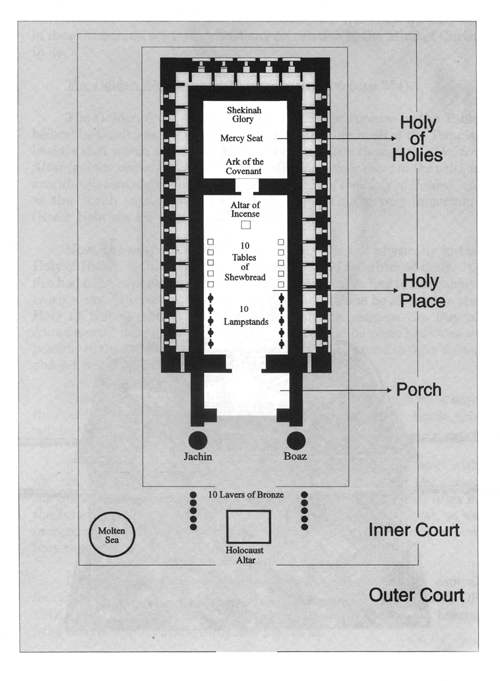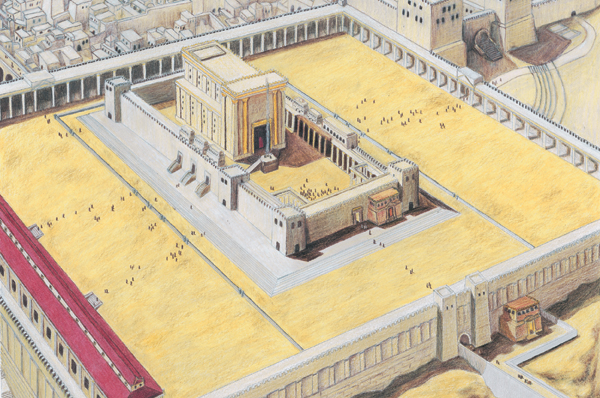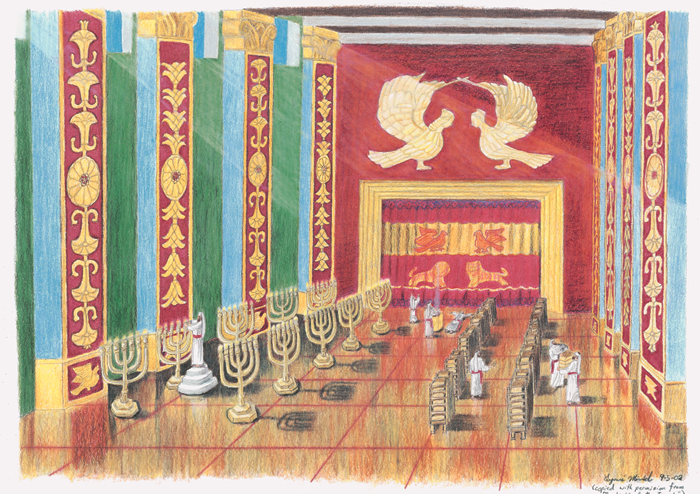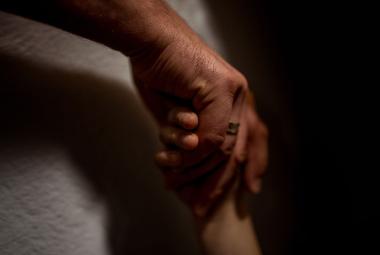Review
Over the past few months, we have been studying the subject of worship, and we’ve come to the conclusion that worship is the single most important thing a Christian can learn to do. It’s important because it’s the “key” to holiness and God’s presence and the secret to true joy and happiness. What else could be more important? Without being holy, we cannot worship. Without being worshippers, we’ll not be able to enter His presence; without His presence, we’ll have no joy; and, without joy, Nehemiah 8:10 tells us, we’ll have no strength (“the joy of the Lord is our strength.” Psalm 16:11) And I’m convinced that without these things, we won’t be able to withstand the trials that God allows in our lives. Worship truly is the most important thing a Christian can learn to do.
Worship is the reason we were created in the first place. Revelation 4:11 tells us that the Lord created us “for His pleasure.” He yearns for our fellowship and our love. Therefore, our true relationship with Him is shown forth in our worship.
Surrender is Key
So, worship flows from love. We worship what we love. The word used in Scripture for the verb “to love” is the Greek word agapao, which means “to totally give ourselves over to something" - to surrender all to it. The Lord desires that we give back to Him the life that He granted us in the first place. In other words, total relinquishment is a choice that we make out of our own free will and out of our love for Him.
Love for God, then, is not just an emotional feeling, but a complete surrender of ourselves, heart, mind and soul. We have “put off” our sin and self and have “put on” Christ. On the other hand, when we don’t know how to love God—how to completely surrender our lives to Him—we’ll not be able to truly worship Him. Love comes before worship. In summary, we can only worship the Lord to the degree that we love Him and to the degree to which we are surrendered, cleansed and holy.
The Temple Revisited
Speaking of being surrendered, cleansed and holy, let’s turn back, for just a moment, to the cleansing ceremony that the Lord ordained for the priests of Solomon’s Temple.
As I mentioned last month, when I first began to explore the intricacies of this fascinating temple - the Holy of Holies, the Holy Place, and the Inner and Outer Courts - I saw many parallels between the temple’s blueprint and the interior architecture of man (i.e., spirit, heart, soul and body). I was fascinated by these similarities. Were they just a coincidence or rather God’s clues to something much deeper. With over 52 chapters in the Old Testament mentioning this temple and its ceremonies, I figured there must be something very important here. As we proceed with this comparison, you judge for yourself. See if it validates to you the hand print of God and the divine connection between the architecture of man and Solomon’s temple.
I’m convinced there are important principles that we can glean from studying Solomon’s Temple and the ceremonies the Lord ordained for worship. The Lord tells us that everything in the Bible, from the smallest detail to the greatest, is there for our learning. (Romans 15:4) In other words, He has given us many visual word pictures in Scripture to help us understand His ways a little more clearly. Solomon’s Temple is definitely one of these. See what you think.
The Priest’s Worship Service
 So how did the priests in this temple worship the Lord? What was their order of service like?
So how did the priests in this temple worship the Lord? What was their order of service like?
The Temple Blueprint. Like we did last month, let me first give you an “overall picture” and then we’ll come back and explore each area of service in greater detail. The order of service for the priests was as follows:
After the Levites opened the Outer Court gate for the people, they began to sing and praise the Lord. Then, the priests entered the Inner Court and immediately went to the Lavers of Bronze where they washed their hands and feet. After that they approached the Brazen Altar (or Holocaust Altar), where they sacrificed their animals in order to purge the sins of the people. Next, they immersed themselves bodily in the Molten Sea. And, finally, they took a censer full of hot coals from the Brazen Altar, went back into the Holy Place where they changed their clothes, took some incense and sprinkled it over the coals at the Golden Incense Altar where God promised to “meet with them.” (Exodus 25:22) Approaching the Golden Altar of Incense, they took off their shoes, prostrated themselves and worshiped the Lord in the “beauty of holiness.”
“Give unto the Lord the glory due unto His name; bring an offering, and come before Him; worship the Lord in the beauty of holiness.” (1 Chronicles 16:29)
“Give unto the Lord the glory due unto His name; worship the Lord in the beauty of holiness.” (Psalm 29:2)
“Oh, worship the Lord in the beauty of holiness; fear before Him, all the earth.” (Psalm 96:9)
Upon leaving the Holy Place, the priests then shared of the fullness of the Lord (or the anointing) that they had received at the Golden Altar by addressing all the people who had gathered in the courtyard. One of the passages they recited was Numbers 6:24-26:
“The Lord bless thee, and keep thee; the Lord make His face shine upon thee, and be gracious unto thee; the Lord lift up His countenance upon thee, and give thee peace.” They repeated this entire ceremony twice a day, once in the morning and once at night.
Now, let’s explore each of these areas and each of these ceremonies in a little more detail.
The Outer Court

All of Israel had access to the Outer Courts and, thus, could freely come in and out. Whereas, only the priests could enter into the holy sanctuary.
The first thing that occurred in the Outer Court was that the trumpets were sounded and the Levites opened the gates for the people to enter. Psalm 118:19-23 describes this scene: “Open to me the gates of righteousness...” These are the gates that lead to the presence of the Lord. Other Levite priests ascended the platform that faced the outer altar and they, too, began to sing.
“O come, let us sing unto the LORD: let us make a joyful noise to the rock of our salvation. Let us come before His presence with thanksgiving, and make a joyful noise unto Him with psalms.” (Psalm 95:1-2; see also Psalms 100:2 & 4; 118:19)
The Levites were commissioned not only to guard all the temple gates, but also to sing a new song each day. Sunday they sang Psalm 24; Monday, Psalm 48; Tuesday, Psalm 82; Wednesday, Psalm 94; Thursday, Psalm 81; Friday, Psalm 93; and Saturday, Psalm 92.1 These songs were as important to the service as were the priestly duties themselves. Three times during their song, they would pause while the priests sounded their silver trumpets and all the people in the courtyard would fall down and prostrate themselves before the Lord. They did this both at the beginning and at the end of the service.
The Inner Court
The official priests - only those who were direct descendants of Aaron - would then enter the Inner Courtyard, wash their hands and feet at the Lavers of Bronze and await the time for the slaughtering of the sacrifices.
When the time arrived, the priests moved to the Brazen Altar where they sacrificed their offerings in order to symbolically remove the sins of the people in order that they could be reconciled to God. Finally, the priests bathed in the Molten Sea by complete bodily immersion as a symbol that God had, indeed, washed away their sins. Thus, the Inner Court was known as the cleansing and atoning area.
The Holy Place

Fire, incense, tapestry and gold all led the priest higher and higher up to the Holy Place and the Incense Altar where he worshiped the Lord. Following the offering of the sacrifices in the Inner Court, one of the priests gathered some hot coals in a brass carrier from the Brazen Altar and carried them into the Holy Place, where he promptly changed his clothes. Once he had “put off” his dirty clothes and “put on” his clean ones, he picked up the hot coals and placed them on the Incense Altar. Another priest stood by, holding the incense. A third priest took the incense in the palms of his hands and after the first two left, scattered the incense over the hot coals. The fire and the smoke from the incense rose up toward the ceiling, spread out and filled the entire sanctuary. (1 Kings 8:10-11) The last priest then prostrated himself on the ground. While all this was going on, the other priests came to the Holy Place to witness the offering of incense and they, too, prostrated themselves.
Upon leaving the temple sanctuary, the head priest stood upon the steps facing the congregation in the Outer Court. The rest of the priests joined him there and they all extended their hands towards heaven and called upon the unutterable Name of God. The head priest then blessed the people and recited Scriptures. At this reading, the rest of the priests and all the people again fell on their faces and worshiped God.
How Does All of This Apply to Us?
Again, the question: Does this Jewish, Old Testament, Old Covenant temple service have anything at all to do with us Gentile, New Testament, New Covenant believers? In other words, can we apply what we have learned here to our own daily devotional times? Yes, it seems we can.
I am fully aware that we are not under the Law nor under the Old Covenant, but under grace and the New Covenant. (Romans 6:14) So, I do not mean to imply that there’s some sort of ritual or ceremony that we must do in order to work our way towards God. That’s not what I am saying at all. However, I do believe that by this service God has given us a “set of guidelines” and that by following these suggestions not only will our devotional times be acceptable to Him, but also they will become an incredible blessing to us. The most important thing we, as New Testament believers, can do is allow the Holy Spirit the freedom to direct us. Because, of course, only He knows the “perfect” way for us to worship.
Again, God made the rules; we must simply carry them out. However, in order to carry them out, we must first understand what they are.
Let’s briefly explore what the Word of God has to say about worshiping and see if there is any connection to Solomon’s Temple and its priests. A couple of obvious Scriptural connections are: 1 Corinthians 3:16 and 2 Corinthians 6:16, which both tell us that “we are the temple of God” and that the “Spirit of God dwells in us,” just as He did in Solomon’s Temple. Paul is making an analogy or a word picture here by saying that our body is a temple and the Holy Spirit dwells in us. Remember that in the Old Testament the Holy Spirit dwelt in the Holy of Holies of Solomon’s Temple. Scripture tells us that now God’s Spirit dwells in “temples not made with hands” - i.e., us. (Acts 17:24)
1 Peter 2:9 also tells us that: “[We] are...a royal priesthood...that should show forth the praises of Him who hath called [us] out of darkness into His marvelous light.” And verse 5 of that same chapter says, “...[We] also, ...a holy priesthood, [should] offer up spiritual sacrifices, acceptable to God by Jesus Christ.” And, there is Revelation 1:6 which says, “Jesus Christ hath made us kings and priests unto God...” And, Revelation 5:10 which says, “He hath made us kings and priests that we should reign upon the earth.” And, finally, Hebrews 10:19-24 and Revelation 5:8 talk about New Testament saints having “boldness to enter the holiest and worship.”
Psalm 27:4 validates all of the above: “One thing have I desired of the Lord, that will I seek after; that I may dwell in the house of the Lord all the days of my life, to behold the beauty of the Lord, and to inquire in His temple.”
Thus, there seems to be a valid Scriptural comparison between the true worshipers of God who “worship the Lord in spirit and truth,” (John 4:23), and the priests of Solomon’s Temple who worshiped the Lord “in the beauty of holiness” at the Incense Altar. Again, the latter was under the Old Covenant without Christ, and the former, under the New Covenant with Christ. But, the comparison is there and Scripture seems to suggest that it is important.
How does God want us to apply this priestly worship service to our own lives? How do we go about entering the Lord’s presence? What is the practical application for all of this?
To be continued next month: “Personal Preparation for Worship.” This article has been excerpted, in part, from Nan’s new book Private Worship: The Key to Joy.
Notes:
- The Holy Temple of Jerusalem, Chaim Richman, page 95.


